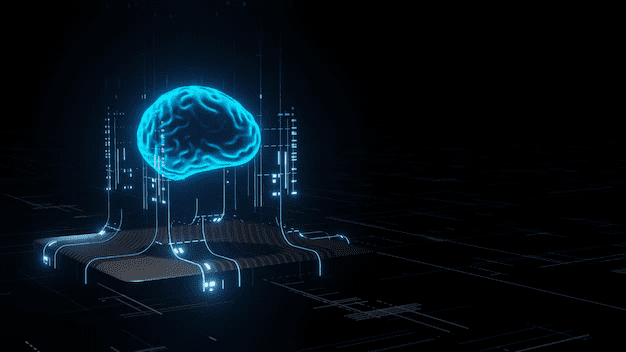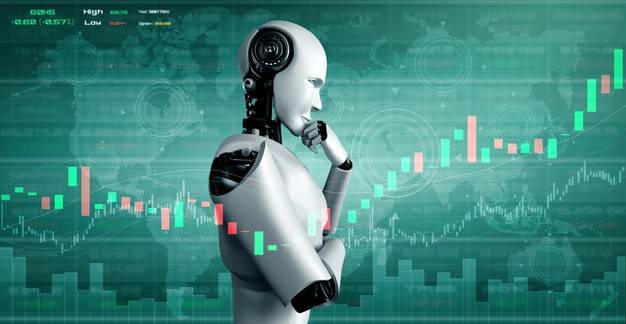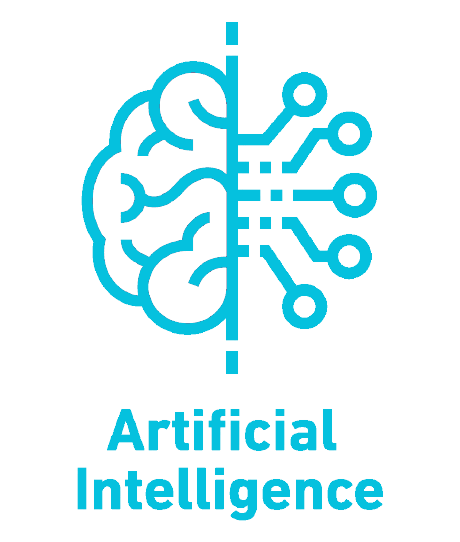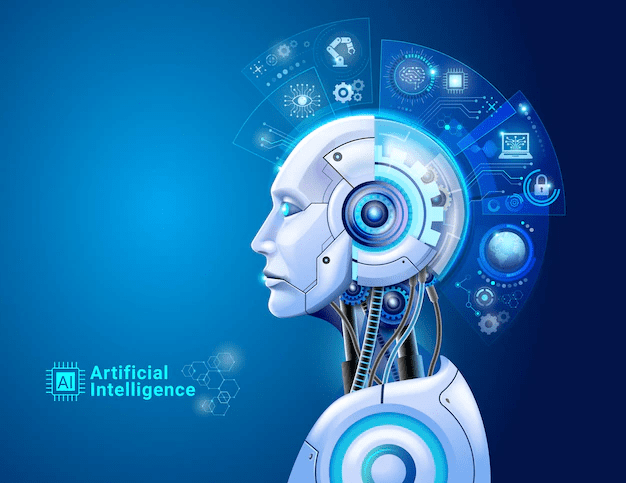Table of Contents
Artificial Intelligence Gaining Popularity
Artificial Intelligence (AI) is on the rise gaining popularity in the world of technology, with definitely a good reason. As we see in the past few years, several innovations and improvements that you only find in the field of science fiction are for sure slowly transforming into a reality. So now experts treat AI as a factor for production. In effect, it will show the potential of introducing you to new sources for growing and changing the way work will implement in all industries. For sure the future is Artificial Intelligence.

Does AI Work?
Upcoming Batches of Artificial Intelligence Course Training :-
| Batch | Mode | Price | To Enrol |
|---|---|---|---|
| Starts Every Week | Live Virtual Classroom | 15000 | ENROLL NOW |
AI is nothing but the simulation of human intelligence carried out by machines. Especially computer systems and specific applications that include AI expert systems, machine vision, natural language processing, and also speech recognition.
This basically means that any work requiring human intelligence will be duplicated with the help of AI by machines to increase productivity and efficiency.
What Is Artificial Intelligence?
To put it in simple words, AI is making technology duplicate human intelligence in machines to do our jobs. So, AI increases efficiency and productivity in all kinds of work. AI is copying human intelligence processes by machines, computer systems especially. Also, specific applications of AI include expert systems, natural language processing, speech recognition and machine vision.
So How Does Artificial Intelligence work?
Well, the demand for AI has increased. In effect, vendors are running around to promote how AI they use for their products and services. Also, more often than not, when they talk about AI use, it is actually just one component. For example, machine learning. It also needs a foundation of specialized software and hardware for training and writing machine learning algorithms. Also, you do not have a specific programming language matching with AI.
Artificial Intelligence Language
However, there are a few like Python, R and Java, which are popular and similar to AI. Basically, this system works while taking in large amounts of training data that are labelled. In effect, it analyses the data for correlations and patterns.
Therefore, using these patterns helps you in making predictions about future states.
In this way, a chatbot is fed examples of text chats which learn to produce almost real exchanges with people. There is also a tool for image recognition that can learn to describe and identify objects in images by reviewing millions of examples.

Artificial Intelligence Programming
Basically, it focuses on three cognitive skills
•To begin with there is learning.
•Secondly there is reasoning.
•Thirdly you have self-correction.
Learning Processes
So this particular aspect of AI programming focuses on getting data to make rules in order to turn the data into actionable information. These rules in turn, that is algorithms, give computing devices instructions that go step-by-step for how to complete a specific task.
Reasoning processes
Secondly, the reasoning of AI programming focuses on selecting the right algorithm to reach a needed outcome.
Self-correction processes
Now, this aspect of AI programming is basically to continually fine-tune algorithms to make sure they provide the best possible accurate results.
Why is artificial intelligence important?
To begin with, it is important because it gives enterprises an understanding of their operations which they may not be aware of in the past. Also, in some cases, it will perform tasks better than humans. Especially, when it comes to repetitive and detail-oriented tasks like legal documents analyzing in large numbers to ensure relevant fields are filled in properly.

Does AI Make Mistakes?
So tools of AI-complete jobs with very few mistakes and are quicker. This in addition helps in an increase in efficiency and opens the door to entirely new business opportunities for some enterprises that are larger. Also, prior to the current wave of AI. Also, it would be hard to think of using computer software to connect riders to taxis. However, today Uber has become one of the largest companies in the world by doing exactly that.
Advantages and disadvantages of AI
Artificial Neural Networks along with deep learning AI technologies are evolving at a fast pace. That is primarily because AI processes more significant amounts of data faster making predictions more accurately than humanly possible.
While the large volume of data made on a daily basis will weigh heavy on a human researcher, AI applications that use machine learning can take that data and in no time turn it into actionable information. At the same time, the primary disadvantage of using Artificial Intelligence is its expense, to process the large amounts of data that AI programming needs.
Advantages
- It is indeed good at detail-oriented jobs;
- Four sure reduces the time for tasks that are heavy in data;
- Also delivers consistent results; and
- Virtual agents are always available of course that is Artificial Intelligence-powered.
Disadvantages
- Artificial Intelligence is definitely expensive;
- It also requires deep technical expertise;
- There is a limited supply of qualified workers to build AI tools
- Artificial Intelligence only knows what it’s been shown;
- It lacks the ability to generalise from one task to another.
Strong AI vs. weak AI
Artificial Intelligence is categorized as either strong or weak.

Weak AI
So weak Artificial Intelligence, also known as narrow AI, is an AI system that is built and trained to complete specific tasks. Hence, virtual personal assistance and industrial robots like Apple’s Siri, use weak Artificial Intelligence.
Strong AI
On the other hand, strong Artificial Intelligence, that’s also known as artificial general intelligence (AGI), describes programming that can copy the human brain’s cognitive abilities. So when presented with a task, a strong Artificial Intelligence system can use fuzzy logic to apply knowledge from one domain to another and find a solution. Hence, a solid Artificial Intelligence program should pass both, the Chinese room test along with the Turing test.
Types Of Artificial Intelligence
So, an assistant professor of integrative biology and computer science and engineering at Michigan State University, explains in an Article that AI can be categorized into four types. To begin with, task-specific intelligent systems are in wide use today and progressing to sentient systems, which do not exist yet. Let’s see the types of Artificial Intelligence.
There are four types of AI

Reactive machines
Basically, AI systems have no memory and are task-specific. To give an example is Deep Blue, the IBM chess program that beat Garry Kasparov in the 1990s. Deep Blue can identify pieces on the chessboard and will make predictions. However, because it has no memory, it cannot use past experiences to give future ones.
Limited memory
Now, these AI systems have memory, so they can use past experiences to inform future decisions. Also, some functions in decision-making in designing self-driving cars this way.
Theory of mind
So, the theory of mind is a psychological term. Hence, when we apply this to AI, the system has the social intelligence to understand emotions. This type of AI will also help to reason with human intentions and predict behaviour. For sure a necessary skill for AI systems to become integral members of human teams.
Self-awareness
Well, in this category, AI systems have a sense of self. This, in turn, gives them consciousness. Machines that have self-awareness understand their own current state. Although this type of AI does not yet exist.
So, what are the examples of AI technology and how to use it?
To begin with, AI is added to a variety of different types of technology. So let’s look at these six examples.

Automation
So, when you pair it with AI technologies, automation tools expand the volume and types of tasks performed. An example is robotic process automation (RPA). This is a type of software that automates rules-based data, and repetitive processing tasks normally done by humans.
Further More
Hence, when this combines with machine learning and emerging AI tools, RPA can automate bigger parts of enterprise jobs. In turn, this enables RPA’s tactical bots to give intelligence from AI and respond to process changes.
Machine Learning
This is nothing but the science of getting a computer to act without programming. Hence, a subset of machine learning is Deep learning. So in very simple terms, it is thought of as the automation of predictive analytics. Therefore, are three types of machine learning algorithms.
Supervised learning
Data sets have labels so that patterns are detected and you use them to label new data sets.
Unsupervised learning
Basically, Data sets don’t have labels and you sort them out according to similarities or differences.
Reinforcement learning
This Data set also doesn’t have labels but, after performing one or several actions, you give the AI system feedback.
Machine Vision
Now, this technology gives a machine the ability to see. Basically, Machine vision captures and analyzes visual information while using a camera. It is also, analogue-to-digital conversion and digital signal processing.
Sure, it is compared to human eyesight, however, machine vision isn’t restricted by biology and you can program it to see through walls. So Computer vision focuses on machine-based image processing, which is often combined with machine vision.
Robotics
This field of engineering basically focuses on the design and manufacturing of robots. Robots are mostly used to perform tasks that humans find difficult to perform or consistently perform. For example, assembly lines for car production or NASA to move large objects in space robots are used. Now Researchers are also using machine learning to make robots that interact in social settings.
Self-driving cars
As in the case of Autonomous vehicles, you use a combination of computer vision, image recognition and deep learning to make automated skills. This course helps with piloting a vehicle while staying in a given lane and avoids unexpected obstructions, such as pedestrians.
What are the applications of AI?
Artificial intelligence is definitely making its way into a variety of wide markets. So here are nine examples.

AI in healthcare
This is easily one of the biggest uses to improve patient outcomes and reduce costs. Also, companies are applying machine learning to make fast and better diagnoses than humans.
AI in business
So, machine learning algorithms integrate into analytics and customer relationship management (CRM) platforms to reveal information on how to serve customers efficiently. Also, chatbots have been put into websites to give customers immediate service. In addition to that, among academics and IT, analysts Automation of job positions is also a talking point.
AI in education
AI easily automates grading, which gives educators more time. It will also assess and adapt to students’ needs which helps them work at their own pace. AI tutors give support to students, in addition, will make sure they are on track. And it also changes how and where students learn. It perhaps even will replace some teachers.
AI in finance
So, the next type of Artificial Intelligence in applications for personal finance, such as Intuit Mint or TurboTax, is disturbing financial institutions. Hence, applications like these collect personal data and give financial advice. Also, Other programs, like IBM Watson, apply to the process of buying a home. So Artificial Intelligence today perform a majority of the trading on Wall Street.
AI in manufacturing
There is always demand to use robots in Manufacturing. Industrial robots, for example, that they program one at a time, in effect perform a single task at a time. This of course separates them from human workers. There are also smaller, robots that multitask and collaborate with humans and take on the responsibility for more bits of the job in factory floors warehouses, and other workspaces.
AI in banking
Banks are now successfully employing chatbots which in turn make their customers aware of services and offers. They also handle transactions that don’t need human help.
Also, there are AI virtual assistants to improve and cut the costs of compliance with banking regulations. Banking organizations are also using AI to improve their loan decision-making, set credit limits and identify investment opportunities.
AI in transportation
In addition to AI’s fundamental role to operate autonomous vehicles, you use AI technologies in transportation to predict flight delays, manage traffic, and make ocean shipping more efficient and safer.
Security
So, AI and machine learning are at the lead of the popular list of security vendors use today to differentiate what they offer. These terms also represent truly usable technologies. Organizations, in effect, use machine learning in security information and event management software. They also analyze data and use logic to spot similarities and recognise malicious code.
AI in law
So in Law, the discovering process or going through documents is often overwhelming for humans. Therefore, using AI to help automate the legal industry’s processes that are labour-intensive saves time and improves client service. Law firms also use machine learning to describe data and predict outcomes. They use computer vision to classify and get information from documents and natural language processing to interpret requests for information.
History of Artificial Intelligence
Here is a brief timeline of the past six decades of how AI evolved from the time of its inception. To know the present and the future, let’s look at the History Of Artificial Intelligence.
1956 – John McCarthy came up with the term ‘artificial intelligence ‘ and also had the first AI conference.
1969 – So the first general-purpose mobile robot built was Shakey. It is now able to do things with a purpose as opposed to just a list of instructions.
1997 -The supercomputer ‘Deep Blue’ was indeed designed, and it defeated the world champion chess player in a match. It was a huge milestone for IBM to build this large
computer.
2002 – This was the year, the first commercially successful robotic vacuum cleaner was made.
2005 – 2019 Today, of course, we have speech recognition, robotic process automation, smart homes, a dancing robot, and other innovations making their debut.
2020 So Baidu releases the algorithm of LinearFold to medical and scientific. Medical teams developed a vaccine during the early onset of the SARS-CoV-2 (COVID-19) pandemic. The algorithm also predicts the RNA sequence of the virus in only 27 seconds. This is of course 120 times faster than other methods. The future of Artificial Intelligence is here.
Future Of Artificial Intelligence

Artificial intelligence is for sure shaping the future of humanity across almost every industry. It is already the main force of upcoming technologies like big data, robotics and IoT. It will also continue to act as a technological innovator for a predictable future. So, one of the important purposes of AI is for cyber defence activities. AI also will automate searches for security in software, and all sections of existing industries. Basically, increasing efficiency and will cut down time spent with everything manual.
Artificial Intelligence Course Available
Henry Harvin – Certified Artificial Intelligence Practioner Course (CAIP)

Henry Harvin is a global Edtech company bases in the US and India with a customer base in 97+ countries and ranks amongst the top 500 Edtech companies globally and the top 100 Edtech companies in India accredited by NASSCOM and approved by the government of India. It is one of the most trusted and award-winning online learning portals with state-of-the-art training programs and upskilling courses and internships to gain experience, with curriculum and boot camps designed and academic experts including AI courses in India. Receiving certification from Henry Harvin adds colossal value to acquiring jobs in data positions or business analytics.
Key Features
- Trending certification
- Integrated curriculum
- All practical training
- Gain experience in 12+ projects
- Job Assistance and a year’s support of AI and machine learning academy
Duration
The course is basically for a duration of 32 hours.
Projects covered
- Firstly HR: Analyze the Attrition rate of Employees
- Secondly, Sales: Predicting Department wise Sales
- Thirdly, Multi-Domain: Business Analytics Optimization
- Fourthly, Marketing: Website Trend Analysis
- Then of course Financial Analysis: Stock Market Prediction
- Lastly, Finance: Analyze ETF Trends
Skills You Will Learn
- Algorithm prediction
- Storytelling
- Data Science
- Deep learning
- Data Analysis
- Machine learning
Career Benefits
- Of course, become Eligible for jobs demanding an AI background.
- Also, fill thousands of untapped High-Paying Jobs for Artificial Intelligence experts.
- It in effect opens doors to Job Opportunities in AI specialization Abroad.
- Also, improve your CV & LinkedIn Profile.
- So, your profile stands out from peers and Promotes you in your current profile with the most in-demand skill.
- You also earn a Rewarding Certification as a ‘Certified Artificial Intelligence Practitioner’.
You will also find this course in Hyderabad, Chennai, Coimbatore, Bengaluru, Delhi and Mumbai
Other Courses By Henry Harvin
- Digital Marketing Training Course
- Cyber Security Course
- Content Writing Course
- Tableau Training
- French Language Course
Conclusion
To put it simply, Artificial Intelligence is the future. It will definitely take over all sorts of tasks. Artificial intelligence for sure has the potential to transform organizations. This is basically driven by computers and data that understand our world.
This, in turn, helps to make more informed decisions. Also, these future computers will understand how to turn on the switches and why the switches need to be turned on. Even further, they may even one day ask us if we need switches at all.
FAQ’s
Ans. Artificial intelligence is the Future, to make machines do manual work and increase efficiency.
Ans. To give examples, Voice assistants, image recognition for face unlock in cellphones and ML-based financial fraud detection.
Ans. It’s used for personalized shopping, personalized learning, creating smart content and autonomous vehicles to name a few.
Ans. Well, Google Search is a form of narrow AI, just like predictive analytics, or virtual assistants.
Ans. AI increases the personalization of student learning programs and courses. It will help students improve their weak spots and sharpen their skills.
Recommended Programs
Data Science Course
With Training
The Data Science Course from Henry Harvin equips students and Data Analysts with the most essential skills needed to apply data science in any number of real-world contexts. It blends theory, computation, and application in a most easy-to-understand and practical way.
Artificial Intelligence Certification
With Training
Become a skilled AI Expert | Master the most demanding tech-dexterity | Accelerate your career with trending certification course | Develop skills in AI & ML technologies.
Certified Industry 4.0 Specialist
Certification Course
Introduced by German Government | Industry 4.0 is the revolution in Industrial Manufacturing | Powered by Robotics, Artificial Intelligence, and CPS | Suitable for Aspirants from all backgrounds
RPA using UiPath With
Training & Certification
No. 2 Ranked RPA using UI Path Course in India | Trained 6,520+ Participants | Learn to implement RPA solutions in your organization | Master RPA key concepts for designing processes and performing complex image and text automation
Certified Machine Learning
Practitioner (CMLP)
No. 1 Ranked Machine Learning Practitioner Course in India | Trained 4,535+ Participants | Get Exposure to 10+ projects
Explore Popular CategoryRecommended videos for you
Learn Data Science Full Course
Python for Data Science Full Course
What Is Artificial Intelligence ?
Demo Video For Artificial intelligence
Introduction | Industry 4.0 Full Course
Introduction | Industry 4.0 Full Course
Demo Session for RPA using UiPath Course
Feasibility Assessment | Best RPA Using Ui Path Online Course













.webp)
